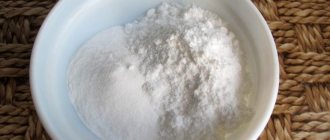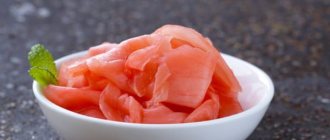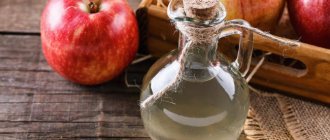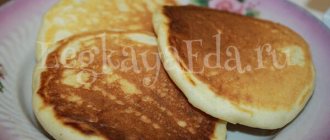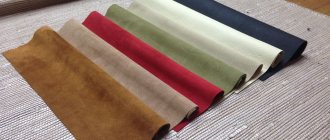Blockages in pipes cause a lot of inconvenience, causing stagnation of water and an unpleasant odor. Advertising means are not always effective, so we have to look for alternative solutions to the problem. Experienced housewives use proven recipes that contain soda and vinegar to clean pipes. When the solution is prepared correctly, they help remove the blockage for a long time. Read about how the products work and the cleaning processes in this article.
ATTENTION! A unique, highly effective product has been developed for cleaning sewer pipes, eliminating any blockages. The product is a concentrated mixture of enzymes that easily break down and process fat accumulations and any deposits of organic origin. One package of Saniclean will last you a whole year! Read more"
Benefits of these funds
- efficiency;
- availability;
- safety for human health.
When baking soda and vinegar are mixed, they create a foam that can be used to remove rust, mildew, grease, and dirty stains.
The disadvantage is the smell, but it can be easily removed with plain water or short airing.
Cooking
The most common method of using baking soda and vinegar is to leaven dough before baking. Shekso alone is not able to give the flour product lightness and soft texture. Only after its active interaction with acid does the dough acquire an airy structure. The exception to the rule when bicarbonate does not need to be quenched before adding to flour is the fermented milk base of the dough. Kefir, sour milk and yogurt contain a sufficient amount of acids, and additional quenching with vinegar is not required. The combination of alkali and acid acts as a leavening agent, but unlike the finished powder, slaked bicarbonate is a natural substance and does not contain harmful additives.
During a chemical reaction, sodium bicarbonate breaks down into water and carbon dioxide. Many voids are formed in the dough, which ensures the splendor of the baked goods.
If the recipe specifies the dose of baking powder as 1 tablespoon, then you can replace it with only ½ tablespoon of baking soda powder plus the required amount of vinegar.
We fight blockages
Hair and food debris clog your kitchen and bathroom pipes. Special products solve this problem, but at the same time cause allergies and spread a toxic odor that causes coughing and watery eyes. So use vinegar and baking soda. The method is notable for the fact that the cleaning agent is prepared directly in the pipe.
Instructions:
- Pour half a cup of baking soda and the same amount of vinegar down the drain.
- Close the hole with a stopper and do not use the sink for several hours.
- When the allotted time has expired, remove the plug and pour water heated to 90 degrees into the pipe.
Important: Strictly follow the proportions; vinegar and soda should be used in equal parts.
Baking Soda and Vinegar for Delicious Baking
Baking soda, quenched with vinegar, is used in cooking to loosen and fluff baked goods. The dough becomes airy only when an alkali reacts with an acid; sodium bicarbonate does not need to be quenched with vinegar if the recipe contains curdled milk, kefir, yogurt or another acidic ingredient. Bubbles in the resulting carbon dioxide form voids in the dough, which give the baked goods their fluffiness.
How to extinguish soda correctly
Unslaked soda spoils the taste of baked goods, this has been tested many times - the dough becomes dark, and the strange taste is compared to soap. Carbon dioxide is released during a displacement reaction when an acid reacts with an alkali. During the baking process, the formation of carbon dioxide is activated, so the dough rises.
Usually they use 9 percent table vinegar or apple cider vinegar. White vinegar has a sharp taste and can be used in baking pies and pancakes. For baking, mild apple cider vinegar is suitable.
A common mistake made by housewives is to dissolve soda in a spoon. If you scoop the powder into a spoon and pour vinegar into it, the reaction will take place before the mixture gets into the dough and will not affect its texture in any way. It is better to quench sodium bicarbonate in flour, then both stages of leavening will be maximized.
Proper preparation of the dough looks like this: mix dry ingredients with soda, liquid ingredients (eggs, water) with vinegar. After that, they are combined and the dough is kneaded.
You can read more about quenching soda with vinegar in this article: Why and how to quench soda with vinegar for baking: recipe for quenching with boiling water, vinegar, citric acid, kefir
Video: extinguishing soda with vinegar
What can replace vinegar?
- You can extinguish baking soda with any acid. Enough, for example, that contained in fermented milk products.
- You can use citric acid: for one teaspoon of soda, a quarter spoon of citric acid in crystals or three teaspoons of lemon or other sour juice is enough.
- Apple cider vinegar or wine vinegar are good substitutes for white vinegar.
- As a last resort, you can extinguish the alkali with boiling water and quickly add it to the dough.
Baking powder for dough, which can be bought at any grocery store, includes soda, citric acid and a little flour. Just add the powder to the dough - when the ingredients and liquid come into contact, a reaction begins, and the baked goods become fluffy. If the recipe calls for adding a spoonful of baking powder, half a spoonful of baking soda and about the same amount of vinegar are enough to replace it.
Why is balsamic vinegar not suitable? Balsamic is a seasoning made from aged grape must. The vinegar is thick, rich in taste and aroma. Only the name has something in common with ordinary table or fruit acid. The seasoning is used in salads, soups, and marinades, but this product is not suitable for baking - there is too much flavor and not enough acid to quench the alkali.
Slaked soda with vinegar is used in many recipes.
Cleaning the microwave oven
The microwave oven gets dirty very quickly and should be washed after each use.
Method 1 - for old and stubborn stains:
- If the contamination is too strong, take 2 tbsp. l. vinegar and pour them into a bowl of water.
- Place this container in the microwave oven and turn it on for 10 minutes. Steam with acid will quickly remove all stains, and all you have to do is wipe the surface with a napkin.
Method 2 - for medium dirt:
- Dried splashes are removed using the same principle. 1 tbsp. l. Add a spoonful of baking soda to a bowl filled with 400 ml of water.
- Start the oven for 3 minutes.
- Remove greasy stains.
Tip: If the surface of the microwave oven is covered with enamel, then use vinegar as little as possible.
Can these cleaning products be used at home?
The sediment that appears as a result of boiling water is difficult to remove by simply washing the kettle. This is due to the fact that lime deposits are insoluble in water.
Even purchased purified water, like water that has passed through home filters, has a low level of mineralization and can also form sediment during the heating process.
Vinegar is an acid that reacts with sediment substances and destroys them. Soda is an alkali that helps loosen scale. With the simultaneous use of acid and alkali, the effect is enhanced and the plaque is destroyed.
Table vinegar and baking soda are food products that can be used to treat the inside surface of a kettle.
Getting rid of plaque in the kettle
Even the highest quality electric kettle is not immune to limescale deposits. As a result, the heating time increases, the device deteriorates, and the taste of the water becomes bitter. To avoid this, pour water into the kettle, add 100 ml of vinegar to it and turn on the device. Do not pour out the solution after it boils. It is advisable to leave the mixture overnight so that all the scale dissolves. You can do the same with soda (just slightly changing the proportions). For this we need 3 tbsp. l. soda and 1 liter of water.
Important: After cleaning with vinegar, wipe the kettle with a soda solution and rinse 3-4 times, each time removing drops with a dry cloth. Otherwise, the tea will taste like vinegar for a couple of days.
Preventive measures
To avoid problems, plumbers recommend regularly taking preventative measures. Such actions will help extend the service life of plumbing fixtures and will prevent food residues and grease from accumulating in the pipe openings. It is advisable to carry out cleaning activities at least once a month, this will prevent the accumulation of grease in the water supply. It is recommended to periodically open the hot water tap.
To prevent the formation of traffic jams, special devices are installed - grease traps. They are periodically removed and washed. Do not throw care products, garbage, or hair into the sink, bathtub or toilet. It is not advisable to wash dirty shoes from the street in the bath.
Often the cause of blockages is a worn-out pipeline. It is necessary to promptly replace failed parts during operation.
Washing the dishes
An eco-friendly lifestyle is not just a fashion statement, but a concern for your health. You can replace synthetic dishwashing detergent with a safer analogue. A damp sponge dipped in soda effectively removes soot, soot, tea stains and yellowness. If unattractive stains remain on your crystal glasses after washing, rinse them in water with vinegar added. This method will make the dishes sparkle and destroy pathogens.
How do blockages appear in a pipeline?
The appearance of “traffic jams” can be caused by a violation of the structure of the pipe line. Mechanical damage to communications also leads to stagnation of water. The main cause of the problem is the accumulation of fat deposits, waste, hair and dirt. After washing dishes, particles of food and fat get onto the inner walls of the pipeline. Over time, they turn into persistent stains.
Throwing tissues, paper, and hair down the toilet can cause clogged drains. Lack of preventive measures to clean plumbing leads to unpleasant consequences. The causes of blockages are varied, mainly resulting from human carelessness. Therefore, it is extremely important to carry out preventive measures to clean the pipe line.
Removing stains from the sofa
Unpleasant odors, stains from coffee, fruits and juices - all this can be removed with a homemade product:
- To 0.5 liters of water add 150 ml of vinegar, 1 tbsp. l. soda and 100 ml of alcohol.
- Pour this mixture into a spray bottle and spray on the sofa.
- After 15 minutes, scrub the stain with a brush and then blot with a clean, damp cloth.
- Dry and vacuum the sofa.
Tip: Use baking soda separately for dry cleaning of furniture.
How to knead dough with soda and fermented milk products
Pancakes and pies made with yogurt, kefir or yogurt will rise well if you add baking soda to the dough. There is no need to extinguish the alkali separately so that the carbon dioxide does not run idle, and the bubbles “invigorate” the baked goods. In order for the slaking process to complete, the dough must rest in a warm place for at least half an hour.
Want to make real Irish bread? Here is a good selection of recipes: How to make simple and tasty soda bread - recipes and ingredients
Cooking pies
For pies made with yogurt and soda you will need:
- Sour milk (kefir) - 0.5 l.
- Soda - half a teaspoon.
- Flour - how much dough will take.
- Vegetable oil for frying and two more tablespoons into the dough.
- 2 tablespoons of sugar.
- Salt - a pinch.
- Filling for pies.
Preparation:
- Mix curdled milk at room temperature with sugar, salt and vegetable oil.
- Add baking soda to a glass of flour and gradually pour into the liquid. The amount of flour should be such that the dough begins to lag behind your hands.
- Leave in a warm place for 30-40 minutes to allow the dough to rise.
- You can make pies from the finished dough and fry them in hot oil.
You decided to make pies, but by chance there was no soda in the house? Prepare charlotte without soda, recipes here: Seven recipes for the most tender charlotte without soda in the oven and slow cooker
Making pancakes with kefir and soda
The right pancake batter flows but does not spread across the pan. The baking soda in the recipe is needed to make the pancakes fluffy and light.
Ingredients:
- A glass of kefir (220 mg).
- Half a teaspoon of soda.
- Approximately 200 g of flour.
- One egg.
- Two tablespoons of sugar.
- A pinch of salt.
- Vegetable oil.
Preparation:
- Mix flour with soda, sugar and salt, and kefir with egg.
- Stir the flour into the kefir until it reaches the consistency of very thick sour cream.
- Heat the oil in a frying pan and pour in small portions of the dough.
- Fry over low heat on both sides.
Lush pancakes can be prepared in different ways - both with soda and without it.
Do you want to make pancakes without soda? Recipes in this article: How to make fluffy pancakes without soda
Fry pancakes in milk and soda
Soft and tasty pancakes with holes seem elementary simple, but not everyone can make them and not always. A few little secrets - and pancakes will become your signature dish.
Ingredients:
- Half a liter of milk.
- Half a teaspoon of soda.
- A teaspoon of vinegar (5 ml).
- 230-250 g of sifted flour.
- Two level tablespoons of sugar.
- A pinch of salt.
- A little vanilla sugar.
- Two tablespoons of sunflower oil.
Preparation:
- Mix and beat eggs, sugar, vanillin and salt in a deep bowl. Add milk, achieve a uniform consistency.
- Gradually add flour and stir constantly to prevent lumps from forming.
- While kneading, add baking soda first and then add vinegar.
- Add oil to prevent pancakes from sticking to the pan.
- Heat a frying pan greased with vegetable oil. Pour the dough and spread it over the entire surface, turning the pan. Frying time on each side over medium heat is one and a half minutes.
More recipes for pancakes with soda: Custard pancakes with soda - step-by-step recipes with photos, you'll lick your fingers
Washing the tiles
Cleaning the tiles and removing dirt between the tile joints is not difficult:
- Pour half a glass of soda into a bowl, add 2 tbsp. l. vinegar, lemon juice and water.
- Apply the product to the brush and scrub the tiles, paying special attention to dark joints where mold forms.
- Then simply wipe the surface with a clean cloth.
Cleaning grout and tile joints
Let's start by removing all the dirt and dust from the floor using a broom.
- Spread baking soda generously over the grout marks to completely cover the problem area.
- Then pour the required amount of vinegar over the baking soda-treated area.
- When these two substances mix, they will react chemically and form bubbles that will help remove dirt from the solution.
- Let the bubbles work for a while and then wash the floor with warm water.
- If the grout or tile grout is too dirty, you may need a brush to clean it before you wash away the dirt with water.
